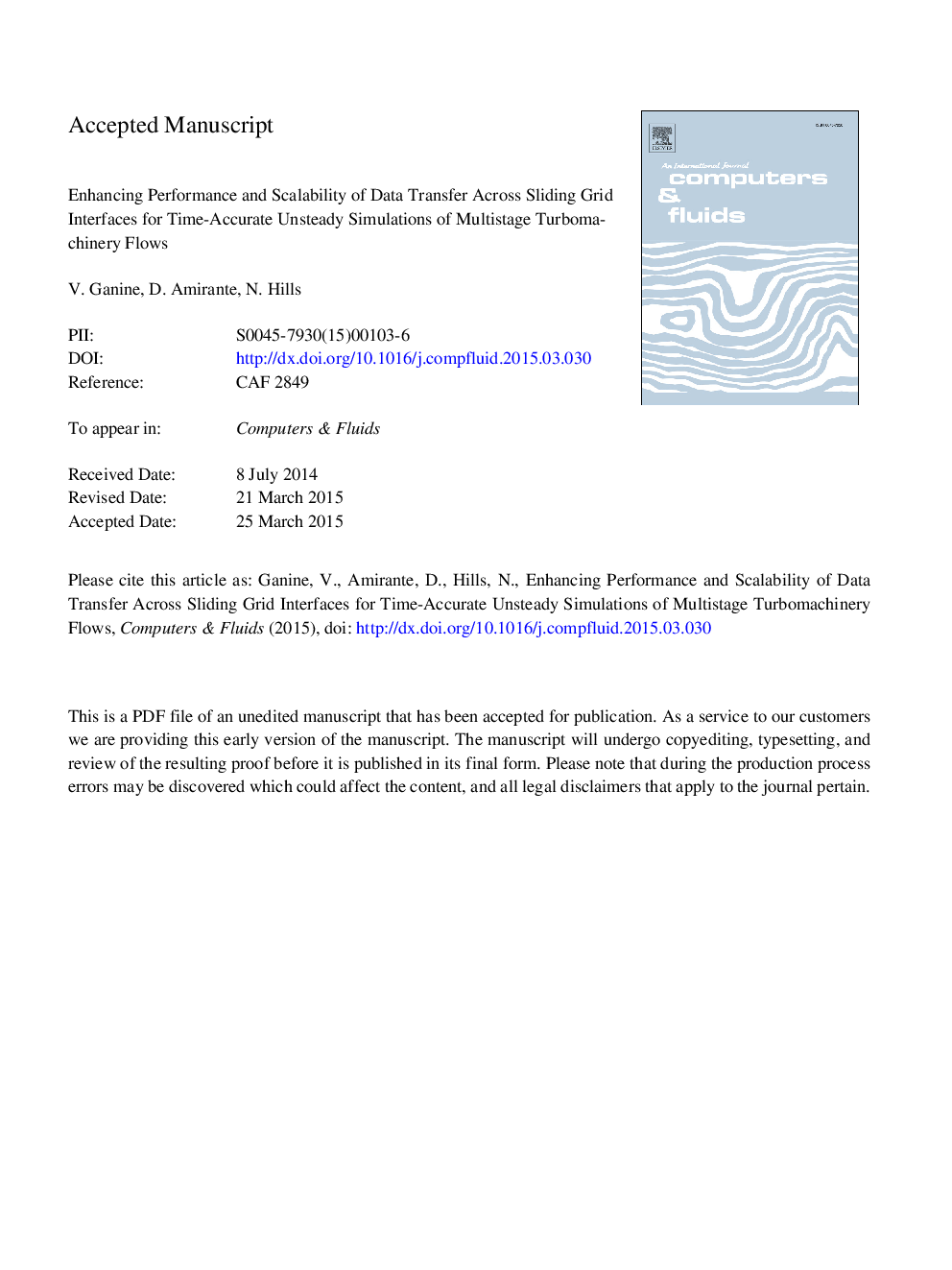| Article ID | Journal | Published Year | Pages | File Type |
|---|---|---|---|---|
| 7156971 | Computers & Fluids | 2015 | 47 Pages |
Abstract
High fidelity simulations of the flow phenomena around complex geometries for turbomachinery applications require fluid solvers to run on ever increasing processor counts. For fully unsteady predictions in rotor-stator systems most of CFD codes employ the sliding interface technique. However, the scalability and efficiency of current sliding grid parallel implementations are significantly constrained by the computation and communication imbalances. They are associated with data transfer across discrete non-matching interfaces. To prepare for the challenges at extreme scales in this paper we attempt to redesign the algorithm in such a way that it maintains the scalability of the original CFD code on static grids. In the proposed parallel implementation the cell containment search and interpolation workloads are balanced by employing a deterministic geometric decomposition on an intermediate “rendezvous” set of processes. Rapidly changing dynamic communication patterns induced by the grids relative motion are handled with a sparse communication protocol. The scaling behavior and performance of the developed technique are analyzed using realistic test cases on two different computing systems.
Related Topics
Physical Sciences and Engineering
Engineering
Computational Mechanics
Authors
V. Ganine, D. Amirante, N. Hills,
